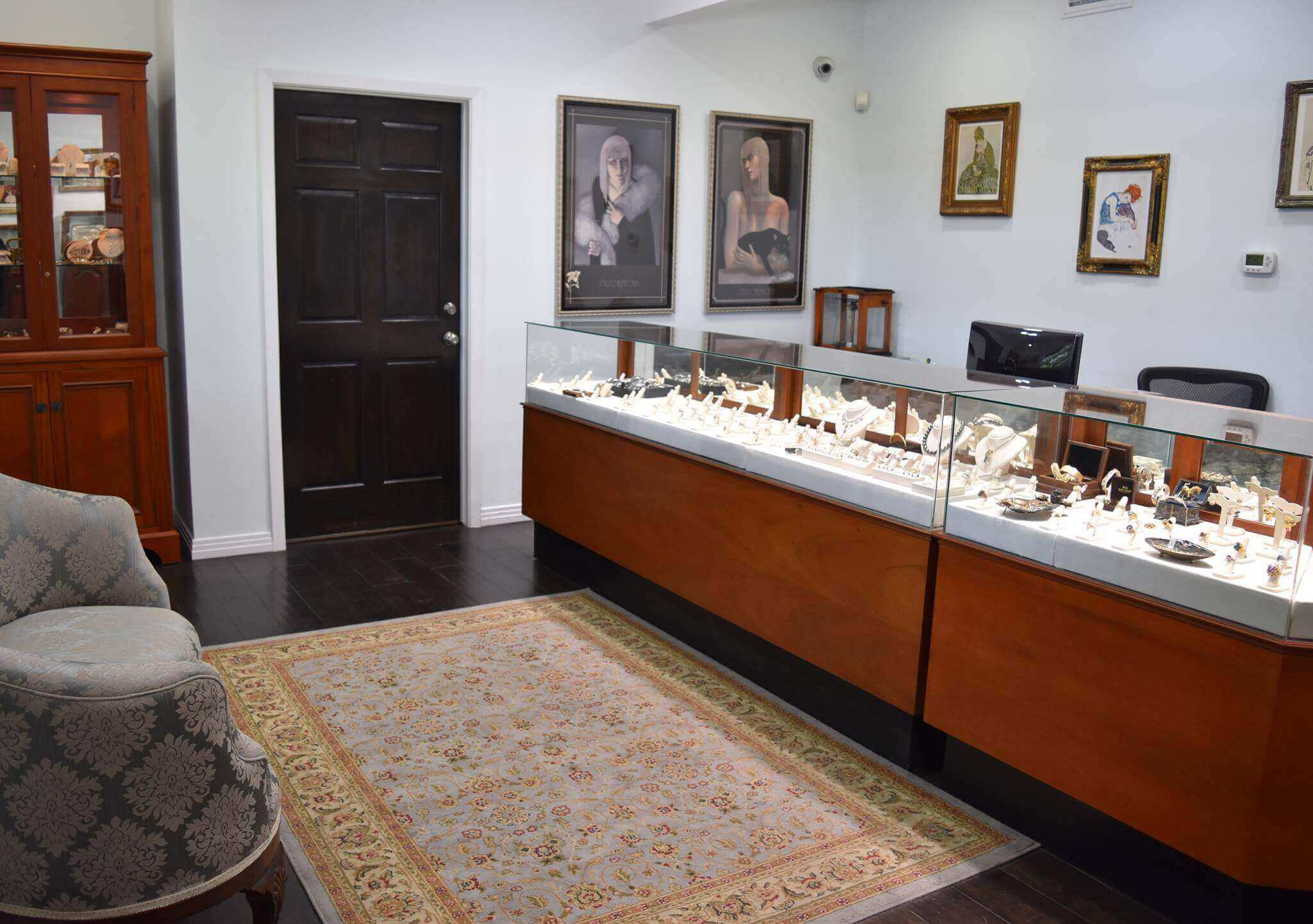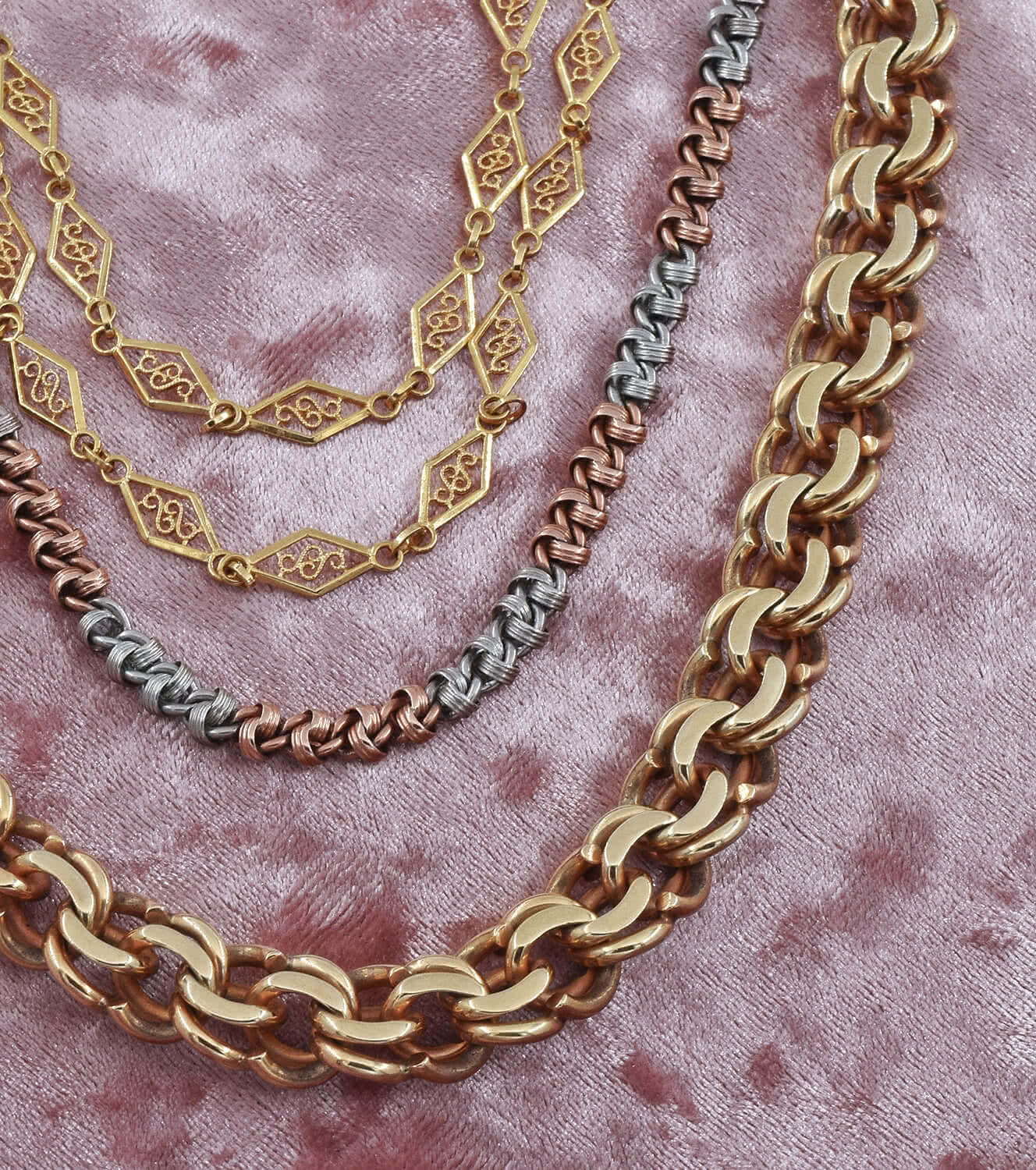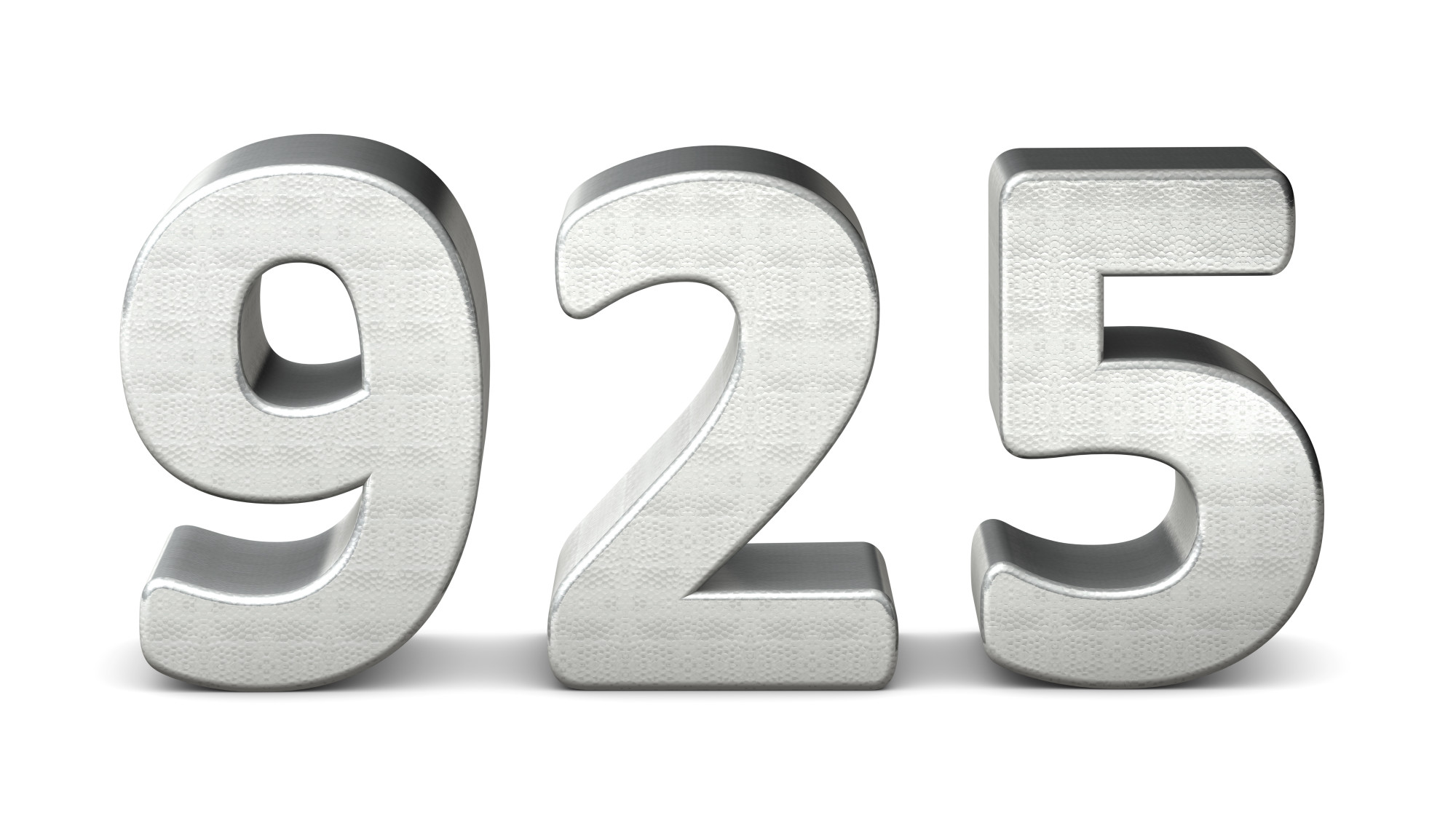Have you ever picked up a piece of jewelry, maybe a pretty necklace or a shiny ring, and noticed a tiny "925" stamped somewhere on it? You're not alone if you've wondered what that little number actually means. It's a very common question, and honestly, understanding these marks can tell you a lot about the treasure you hold. So, what does 925 mean on jewelry? It's a key to knowing what your piece is made of.
This small stamp is a really important clue about the metal's makeup, especially when we talk about silver. It's like a secret code that jewelry makers use to tell you about the quality and purity of their work. Knowing this helps you make smart choices, whether you're buying something new or just trying to figure out what you already have. You see, it's pretty simple once you know the basics, and it can save you a lot of guesswork, you know?
Just like understanding the difference between "do" and "does" helps you speak clearly, knowing what "925" means helps you understand your jewelry better. It's about clarity, isn't it? This guide is here to clear things up, helping you feel more confident about your silver pieces. We'll go over everything, from what the number stands for to how to care for your lovely items, more or less.
- What Does Sigma Mean In Slang
- Detroit Metro Airport Detroit Mi
- Milk And Honey Restaurant
- Portable Air Conditioner Costco
- University Of North Carolina Greensboro
Table of Contents
- The Heart of 925: What Sterling Silver Really Is
- Why Not Pure Silver? The Alloy Story
- A Glimpse into History: The Story of Sterling
- How to Spot the 925 Mark and Other Stamps
- Caring for Your 925 Silver: Keeping It Bright
- Is 925 Silver Real? Understanding Its Authenticity
- The Value of 925 Silver: More Than Just Metal
- Common Uses Beyond Jewelry
- Buying 925 Silver: Smart Choices
- Frequently Asked Questions About 925 Silver
The Heart of 925: What Sterling Silver Really Is
When you see "925" on a piece of jewelry, it tells you that the item is made of sterling silver. This means it's not pure silver, but rather an alloy, which is a mix of metals. Specifically, 925 means the metal is 92.5% pure silver. The remaining 7.5% is usually copper, though other metals can sometimes be used. This mix is pretty important, as a matter of fact.
Pure silver, also known as fine silver, is very soft. It's so soft that it would bend and scratch easily if used for everyday jewelry. Imagine a ring that loses its shape just from wearing it a few times! That wouldn't be very practical, would it? So, the addition of copper makes the silver much stronger and more durable, while still keeping its lovely shine and appearance.
This blend gives sterling silver its strength, making it suitable for all sorts of items, from delicate earrings to sturdy bracelets. It's a standard, really, used around the world to ensure quality in silver goods. So, when you see that 925 stamp, you know you're getting a good, lasting piece, typically.
- James Avery Artisan Jewelry
- Is Lady Gaga Pregnant
- Council Oak Steaks Seafood
- Fuquay Varina High School
- Unveiling The Identity Of Dwayne Anthony Jones Jr Suspect In A Murder Investigation
Why Not Pure Silver? The Alloy Story
You might wonder why jewelers don't just use 100% pure silver if it's so valuable. The answer, as we talked about, comes down to practicality. Pure silver is just too soft for most things we want to wear or use daily. It would scratch, dent, and warp very easily. Think of how a pure gold coin can be bent with your fingers; pure silver is similar in its softness, so.
The 7.5% of other metals, most often copper, gives sterling silver its needed toughness. This small amount of copper makes a big difference in how the metal holds up to wear and tear. It allows jewelers to create intricate designs that wouldn't be possible with pure silver, which would just break apart, you know?
This mixing of metals is a very old practice, going back centuries. People learned early on that adding a bit of another metal made silver much more useful for tools, coins, and, of course, beautiful adornments. It's a clever solution that allows us to enjoy the beauty of silver with the benefit of strength, honestly.
A Glimpse into History: The Story of Sterling
The term "sterling silver" has a rich history that goes back many hundreds of years, particularly in England. The word "sterling" itself might come from "Easterlings," which was a name for German merchants who traded in England in the Middle Ages. These merchants were known for the high quality of their silver coins. So, in a way, the term became a mark of quality, pretty much.
By the 13th century, a standard for silver purity was set in England to ensure fair trade and prevent people from being cheated. This standard was eventually formalized, requiring silver to be at least 92.5% pure. This helped establish trust in the silver market, making it easier for people to buy and sell goods with confidence. It was a big step for commerce, you see.
This historical standard is still in use today, which is quite remarkable. It shows how important consistency and quality have always been, even centuries ago. So, when you wear a piece of 925 sterling silver, you're not just wearing a beautiful item; you're also carrying a piece of history, nearly.
How to Spot the 925 Mark and Other Stamps
Finding the "925" mark on your jewelry usually requires a close look, sometimes even a magnifying glass. It's often stamped in an inconspicuous spot, like on the clasp of a necklace, the inside band of a ring, or the post of an earring. The stamp itself can be very small, so you might need good light, perhaps.
Besides "925," you might also see other variations that mean the same thing. These include "STERLING," "STG," or "STER." Sometimes, especially on older pieces, you might see a series of tiny symbols known as hallmarks. These hallmarks can tell you about the assay office where the silver was tested, the year it was made, and even the maker's mark. It's like a tiny historical record right there on your jewelry, in a way.
If a piece of jewelry doesn't have any stamp, it doesn't automatically mean it's not silver. Some very old pieces or handmade items might not be stamped. However, for most modern, mass-produced sterling silver, you should definitely expect to find the 925 mark or one of its variations. It's a good sign of authenticity, usually.
Caring for Your 925 Silver: Keeping It Bright
Sterling silver, while durable, does need a little care to keep it looking its best. The copper in the alloy reacts with air and moisture, which can cause it to tarnish, making it look dull or dark. This is a very natural process, and it's not a sign that your silver is fake. But don't worry, it's quite easy to bring back its shine, you know.
Here are some tips to help keep your 925 silver sparkling:
- Store it properly: Keep your silver jewelry in a cool, dry place, away from direct sunlight. An airtight bag or a cloth pouch can really help slow down tarnishing. You might even put a small piece of chalk or a silica gel packet in with your silver to absorb moisture, arguably.
- Wear it often: Believe it or not, wearing your silver jewelry can actually help prevent tarnish. The natural oils from your skin can keep it bright. So, go ahead and show off your pieces!
- Clean it regularly: For light tarnish, a soft polishing cloth made specifically for silver works wonders. Gently rub the piece until the shine returns. For heavier tarnish, you can use a silver cleaning solution. Always follow the product's instructions carefully, of course.
- Avoid harsh chemicals: Take off your silver jewelry before swimming in chlorinated pools, cleaning with household chemicals, or even applying lotions, perfumes, and hairspray. These can speed up tarnishing and damage the finish.
- Gentle washing: You can wash your silver with warm water and a mild, phosphate-free soap. Make sure to rinse it thoroughly and dry it completely with a soft cloth before storing it. This is a simple step that helps a lot, you know.
By following these simple care steps, your 925 sterling silver jewelry will stay beautiful for many, many years. It's a small effort for lasting sparkle, really. Learn more about jewelry care on our site.
Is 925 Silver Real? Understanding Its Authenticity
A common question people ask is, "Is 925 silver real silver?" The answer is a definite yes! It is absolutely real silver. The "925" stamp confirms its authenticity as sterling silver, which is a recognized and valued precious metal. It's just not 100% pure silver, as we've discussed, because pure silver isn't practical for most uses. So, it's a real form of silver, just strengthened, more or less.
Sometimes, people confuse sterling silver with "silver-plated" items. Silver-plated jewelry has only a very thin layer of silver applied over a base metal, like copper or brass. This thin layer can wear off over time, revealing the metal underneath. Sterling silver, on the other hand, is solid throughout, meaning it won't "wear off" in the same way. This is a very important distinction to make, you know.
When you buy a piece marked 925, you are getting a genuine precious metal. It holds its value much better than plated items and can be passed down through generations with proper care. It's a reliable choice for lasting beauty and quality, arguably.
The Value of 925 Silver: More Than Just Metal
The value of 925 sterling silver comes from several factors. Firstly, it's a precious metal, so its inherent value is tied to the market price of silver. While it's not as expensive as gold or platinum, silver still has a significant worth. The 92.5% purity ensures that a good portion of the item's weight is indeed valuable silver, so.
Beyond the metal's intrinsic worth, the value of a 925 silver piece also depends on its craftsmanship, design, and any gemstones or other materials it includes. A beautifully designed, handmade sterling silver piece with intricate details can be worth much more than its weight in silver alone. This is where art meets material, in a way.
While sterling silver jewelry is generally not considered an investment in the same way as bullion or pure silver coins, it certainly holds its value better than fashion jewelry made from base metals. It's a durable and beautiful material that offers lasting enjoyment. Plus, it can be melted down and repurposed if desired, meaning it always retains some commodity value, typically.
Common Uses Beyond Jewelry
While we often think of 925 silver in terms of jewelry, its uses extend far beyond rings and necklaces. Its durability and attractive appearance make it suitable for a variety of other items. For instance, many high-quality flatware sets, like forks, spoons, and knives, are made from sterling silver. These pieces are often family heirlooms, passed down through generations, you know.
Decorative items such as ornate picture frames, candlesticks, and serving dishes are also frequently crafted from 925 sterling silver. These pieces add a touch of elegance to any home and are often cherished for their beauty and the history they carry. It's a material that brings a certain classic charm, basically.
Even some musical instruments, like flutes and trumpets, can incorporate sterling silver components for their acoustic properties and visual appeal. This shows the versatility of the metal, proving it's useful for more than just adornment. It's a truly adaptable material, really.
Buying 925 Silver: Smart Choices
When you're looking to buy 925 sterling silver, there are a few things to keep in mind to make sure you're getting a genuine piece. First and foremost, always look for the "925" stamp or one of its common variations like "STERLING" or "STG." This is your primary indicator of authenticity. If a seller claims something is sterling silver but it has no mark, it's worth being a bit cautious, you know.
Consider the reputation of the seller. Buying from established jewelers or reputable online stores gives you more assurance of quality. They typically stand behind their products and can provide more information about the item's origin and care. It's a good idea to buy from places you trust, frankly.
Also, pay attention to the price. While sterling silver is more affordable than gold, it's still a precious metal. If a price seems too good to be true for a substantial piece, it might be a sign that it's not genuine sterling silver, or perhaps it's silver-plated. A little research into current silver prices can also help you gauge if the price is reasonable. It just makes sense, you see.
By being a smart shopper, you can confidently add beautiful and lasting 925 sterling silver pieces to your collection. You'll enjoy them for years to come, and they might even become cherished items for future generations. It's a worthwhile purchase, honestly.
Frequently Asked Questions About 925 Silver
Here are some common questions people often ask about 925 sterling silver:
Does 925 silver tarnish easily?
Yes, 925 sterling silver can tarnish because of the copper in its alloy. This reaction happens when the silver comes into contact with air, moisture, and certain chemicals. However, tarnishing is a surface discoloration and can usually be cleaned off quite easily with proper care. It's a natural process for this metal, so.
Can 925 silver cause skin irritation?
For most people, 925 sterling silver does not cause skin irritation. However, some individuals can be sensitive to copper, which is the alloy metal in sterling silver. If you have a known copper allergy, you might experience a green discoloration on your skin or, in rare cases, a mild rash. This is not common, but it can happen for some, you know.
Is 925 silver good for everyday wear?
Absolutely! 925 sterling silver is a very popular choice for everyday wear because it's durable and strong enough to withstand regular use. With proper care, including cleaning and avoiding harsh chemicals, your sterling silver jewelry can last a very long time and keep its shine. It's designed for daily enjoyment, really.
So, the next time you see that "925" stamp, you'll know exactly what it means for your jewelry. It's a mark of quality, history, and a piece that's built to last. Understanding these small details really helps you appreciate your treasures even more, doesn't it? If you want to learn more about keeping your jewelry looking its best, you can find more tips on this page .
Related Resources:



Detail Author:
- Name : Esta Hauck V
- Username : albina69
- Email : dannie.stehr@mueller.biz
- Birthdate : 1982-10-21
- Address : 7228 Lowe Stream Russellview, ME 13038
- Phone : 1-406-538-1233
- Company : Schowalter, Daniel and Cronin
- Job : Highway Maintenance Worker
- Bio : Fuga neque sit quis esse enim quis sit rerum. Cum fugit numquam aspernatur. Error et itaque et est. Voluptatibus temporibus nostrum distinctio consequatur eius et sequi.
Socials
linkedin:
- url : https://linkedin.com/in/barney_harris
- username : barney_harris
- bio : Autem illo eum illum necessitatibus.
- followers : 3890
- following : 1398
instagram:
- url : https://instagram.com/barneyharris
- username : barneyharris
- bio : Sint expedita nihil qui dolor modi. Mollitia explicabo enim quo sed et temporibus temporibus.
- followers : 4223
- following : 235
